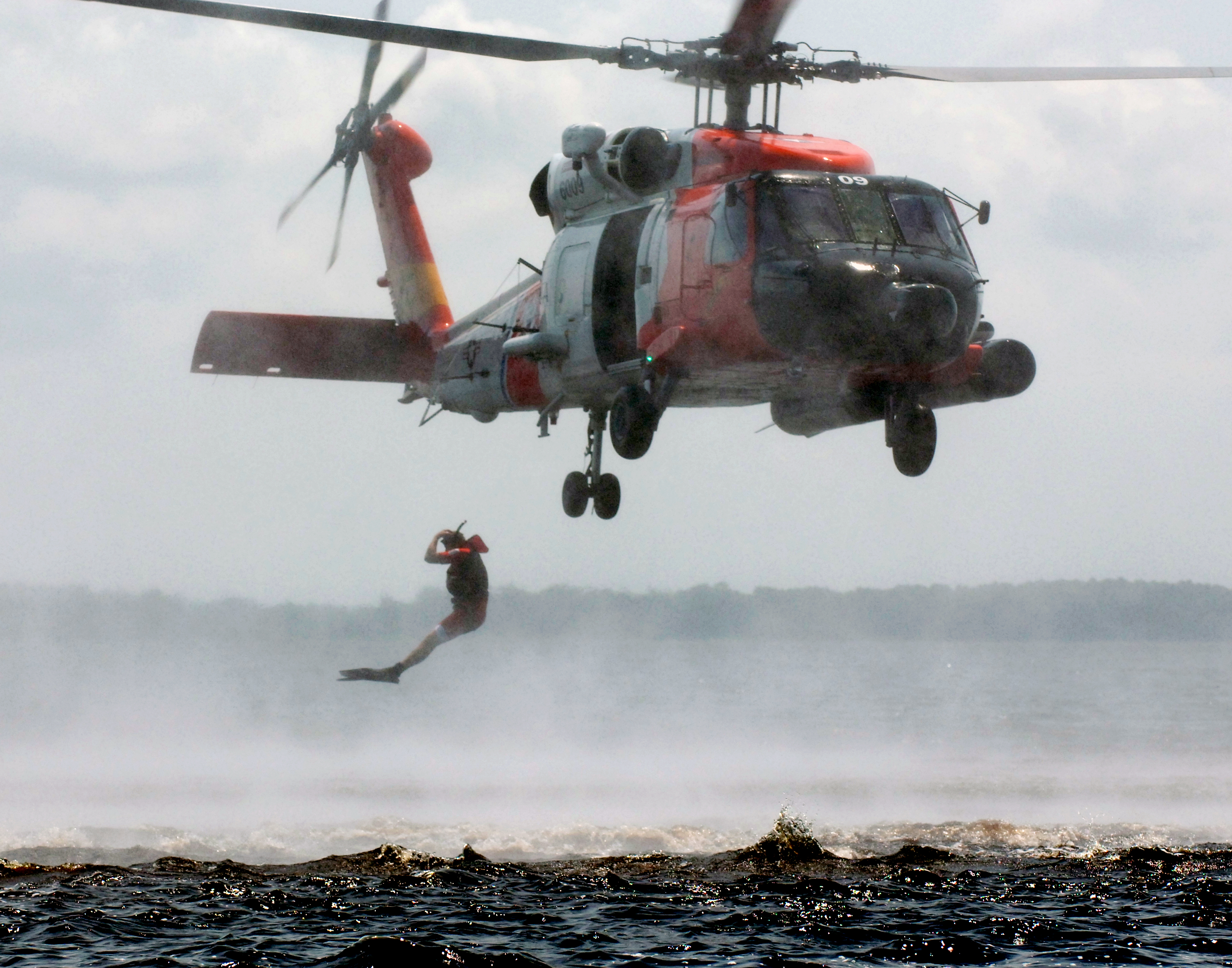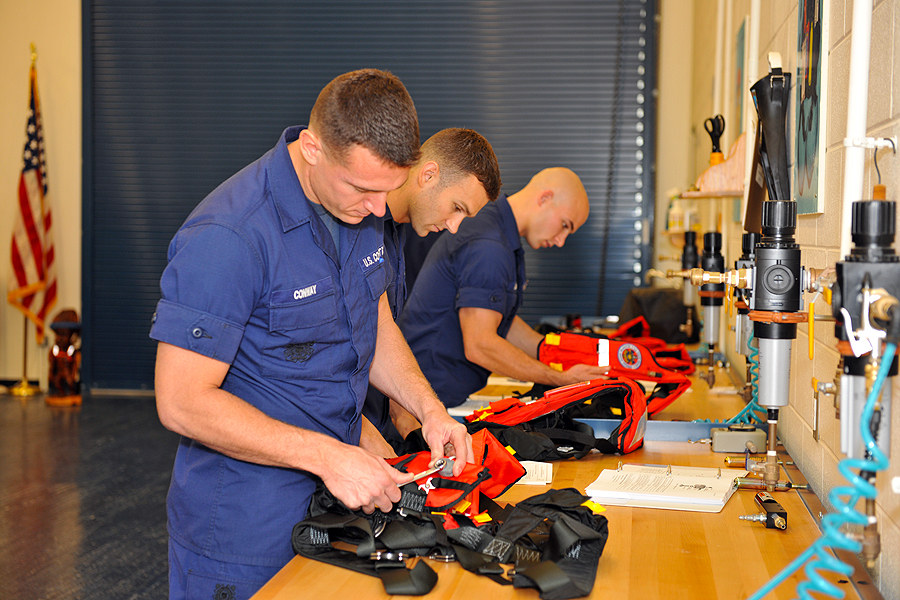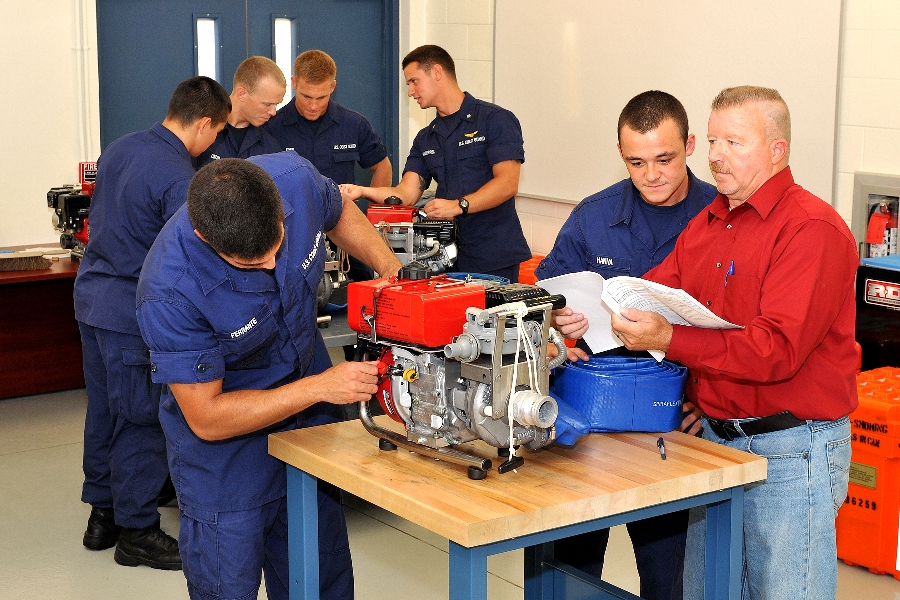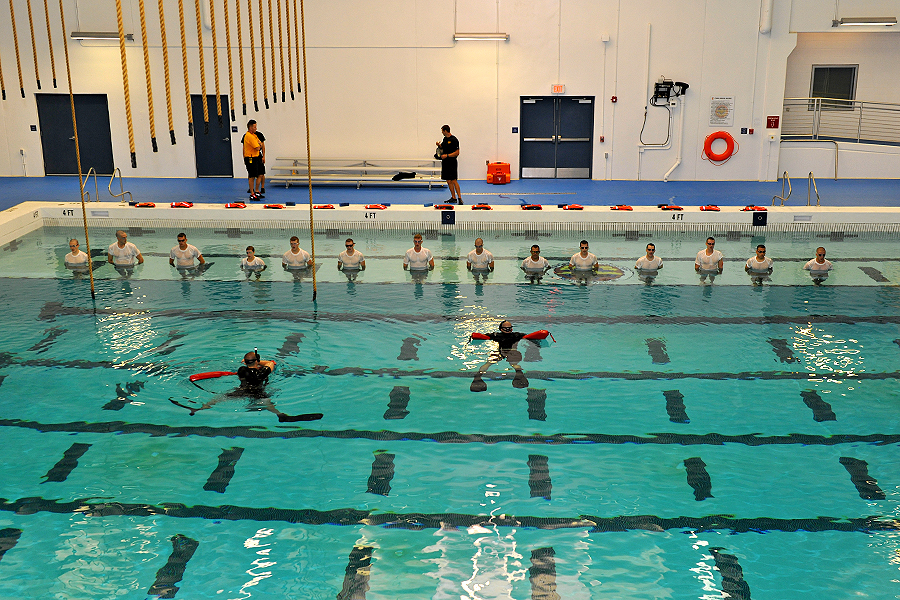Aviation Survival Technician (AST)






______________________________________________
The Aviation Survival Technician’s (AST) primary responsibilities are to inspect, service, maintain, troubleshoot, and repair: cargo aerial delivery systems, drag parachute systems, aircraft oxygen systems, helicopter emergency flotation systems, portable dewatering pumps, air/sea rescue kits, and special-purpose protective clothing. Further responsibilities include the storage and handling of aviation ordnance and pyrotechnic devices.
ASTs also facilitate survival training such as swim tests, land/sea survival lectures and shallow water egress training. They can perform ground handling/servicing of aircraft, conduct routine aircraft inspections, and aviation administrative duties.
As a collateral responsibility, an AST may be expected to fill aircrew positions such as Dropmaster or Loadmaster, Sensor Systems Operator, Helicopter Basic Aircrewman, and Helicopter Rescue Swimmer.
While in an Aircrew position an AST may find themselves being deployed into a myriad of challenging rescues ranging from hurricanes and cliff rescues, to emergency medical evacuations from ships at sea.
Types of Collateral Duty:
ASTs are stationed at Coast Guard Air Stations throughout the United States and Puerto Rico. ASTs may serve at large or small Air Stations servicing HC-130 (Hercules), HU-25 (Falcon), HC-144 (Ocean Sentry), MH-60 (Jayhawk), and MH-65 (Dolphin) aircraft.
Training Available:
The initial four-month AST course covers Aviation Life Support Equipment (ALSE) fundamentals and Helicopter Rescue Swimmer Procedures.
**Advanced courses are Operational Fitness Training, Emergency Medical Technician and Survival Instructor resident Courses.
Qualifications:
You must have an aptitude for mechanics. School courses in algebra, geometry, and machinery are very helpful. Candidates must pass an aircrew-candidate physical and qualify for a "secret" security clearance. All ASTs must be in superior physical shape with no chronic orthopedic problems, possess a high level of mental acuity and outstanding military bearing. Training is extremely stressful and is designed to identify those candidates who possess the physical and mental skills to handle the rigors of being a helicopter rescue swimmer.
Related Civilian Jobs:
- Emergency Medical Technician
- Aircraft Ground Handler
- Land & Water Survival Instructor
- Parachute Rigging and Repair
- Life Support Equipment Technician
- Commercial Aircraft Life Support Technician
- Paramedic